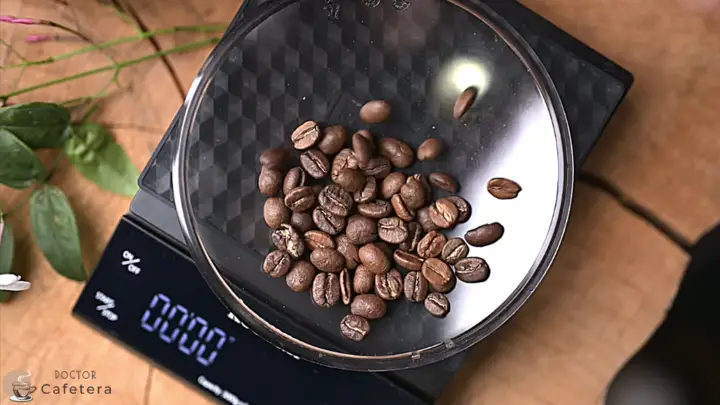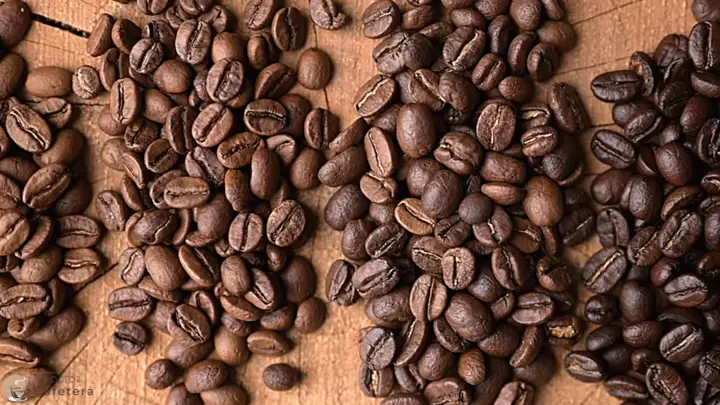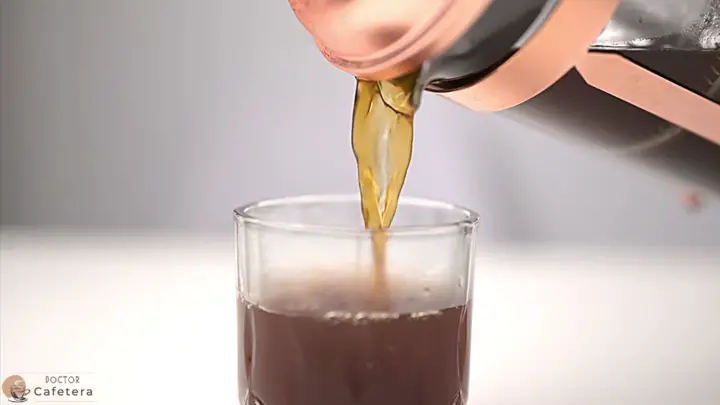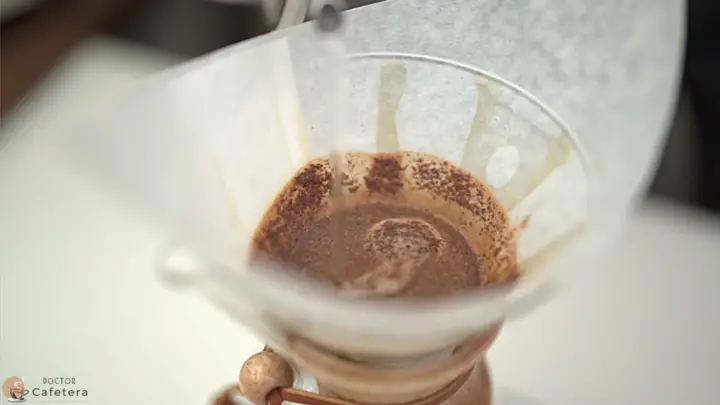What is the correct coffee dose per cup? How many tablespoons of coffee per cup? The amount of coffee we use per cup depends on the method used, and we almost always use a scale to determine it. However, to simplify things, I will handle “tablespoons of coffee per cup” and “grams of coffee per cup.”
- Filtered method: For each 250ml cup, we will use 15g of ground coffee, equivalent to two tablespoons (70mg of caffeine).
- French press: For each 250ml cup, we will also use 15g of ground coffee, equivalent to two tablespoons (90mg of caffeine).
- Instant coffee: For each 250ml cup, I like to use two teaspoons, which equals 2 grams of coffee (90mg of caffeine).
Note: Let’s remember that the measurement “cup” will depend on the type of extraction method and coffee maker we use. In filtered methods, 250ml is the most suitable measurement. However, this is not always the case, so that we will delve deeper into this article. For espresso machines, refer to this article.
How do we measure coffee quantity?
Those taking their first steps into the world of coffee often wonder how much 15 grams, 30 grams, or 60 grams of coffee are and how to make precise measurements. The ideal solution lies in using a scale.
We have an exact number in grams with the scale, which will always be the same. However, if we measure with something more common in the kitchen, like tablespoons, which have a capacity of about 15ml, it will not always weigh the same, and therefore, it will not always have the same amount of coffee.
The volume will depend on many things, such as the coffee you use. Dark roast coffee will weigh less than light roast coffee. And a finely ground coffee for a moka is not the same as a slightly coarser one for a French press (the larger one will take up more space and weigh less).
Considering this and for a clear idea, a standard leveled tablespoon of medium ground coffee for a French press contains about 5g of coffee. For one cup, you need three tablespoons; for two cups, double the amount of both ingredients and so on.
If you always use the same coffee maker with the same coffee, you can use the spoon as a measure and adjust the other variables accordingly.
What Is the coffee brewing ratio?
This word we often see in the coffee world has a very simple concept once we understand it. The ratio is the proportion between the coffee beans and water we use.
So, if we use 60g of coffee per liter of water, we would use an approximate ratio of 1:17; for every gram of coffee, we use 17g (or milliliters) of water.
What Is the purpose of the coffee brewing ratio?
The ratio is part of the recipe we use to prepare coffee. It tells us how much we need of one or the other ingredient.
For example, if we have a 400ml cup instead of a 250ml one, we can calculate the coffee we need by dividing 400 by 17. Or if we only have 12g of coffee in a bag, we multiply it by 17, and we get the amount of water we need to make it.
However, these calculations can be a bit complicated at first, so I recommend calculating based on the 60g per liter base. It’s the most convenient formula to use in your daily coffee brewing.
Does the ratio always have to be 1:17 or 60g per liter? Not at all. It’s just a recommendation.
When should you change the coffee brewing ratio?
It will depend on your personal taste; if you like strong coffee, you should reduce this 1:17 ratio. You should use more coffee for the same amount of water; for example, use 17g of coffee for a 250ml cup and try it.
You should do the opposite if you like milder, less intense coffee. Use 13g of coffee for a cup and try it, as small changes in the quantities will produce drastic changes in your coffee cup.
How does the ratio affect coffee brewing time?
The intensity of coffee is determined by the ratio (by the dose or the amount of coffee we use). This is essential to clarify because many think that intensity comes from the type of coffee or roast.
A dark roast coffee is not more intense than a light roast coffee; it simply has a more toasted flavor and more bitterness. This confusion comes from commercial coffee, which often provides inaccurate package information.
Does the ratio affect brewing time?
If I want to brew coffee for two cups instead of one, I double the quantities of coffee and water, but is the brewing time the same, or should it also be doubled?
As long as we maintain the ratio or ingredient proportion, the brewing time will be the same for one, two, three, four cups, or however many cups there are.
For immersion methods, such as the French press, where we place coffee and water together and let them steep, the time is always the same for all quantities, and we should not modify anything.
For drip or percolation methods, such as the Hario V60 and Chemex, where we must pass a column of water through a coffee puck, we will need to adjust other variables, such as the grind size of the beans, to maintain the same brewing time.
For this, the use of a scale becomes very necessary, which I highly recommend if you want to improve your coffee preparations at home. It provides consistency so you




